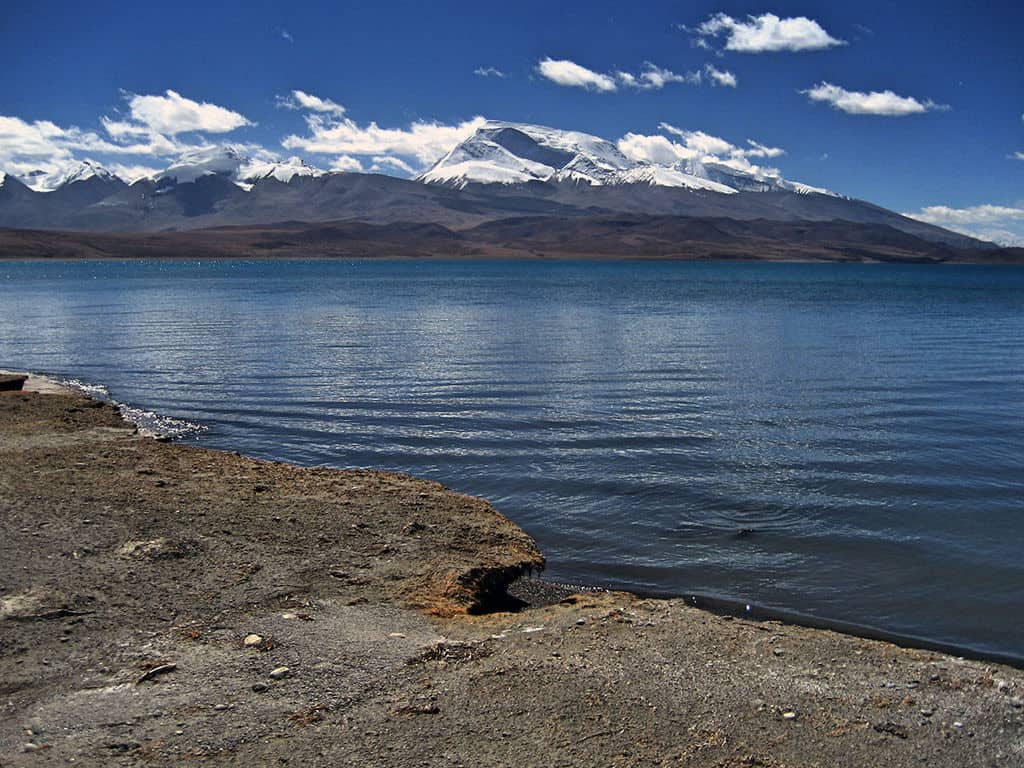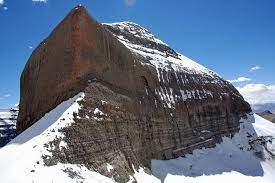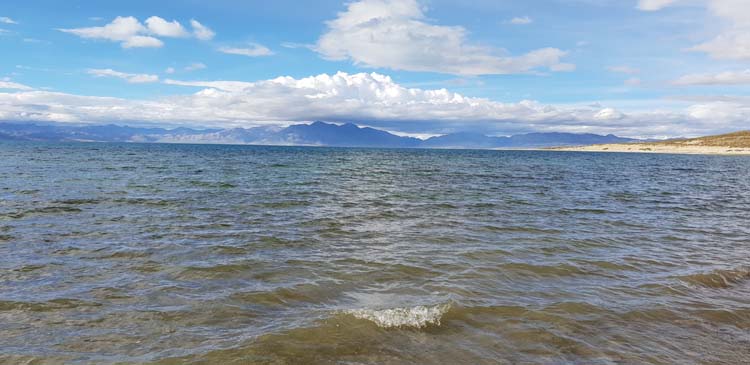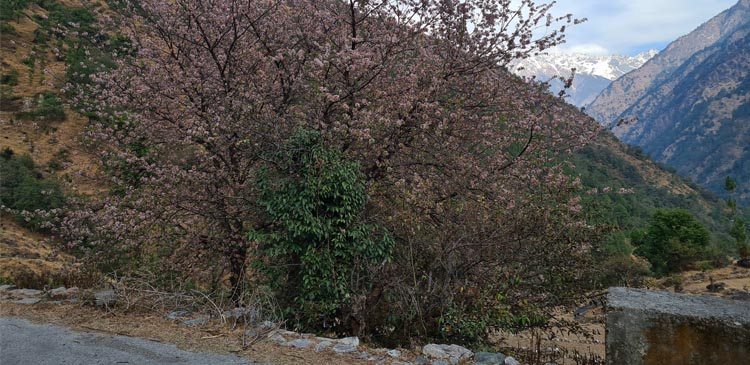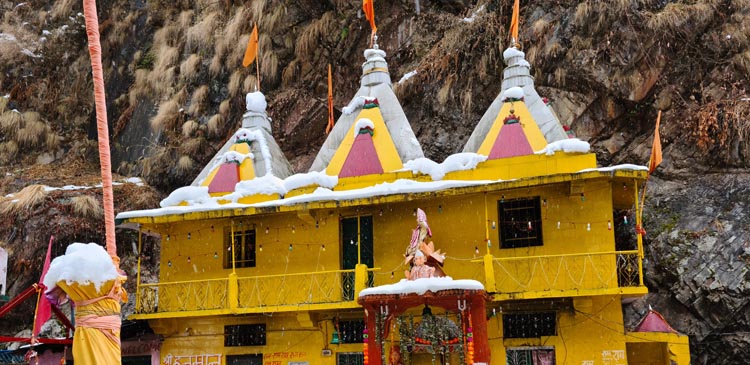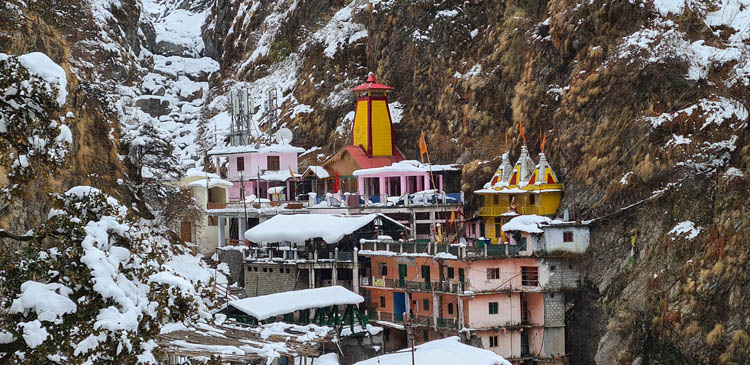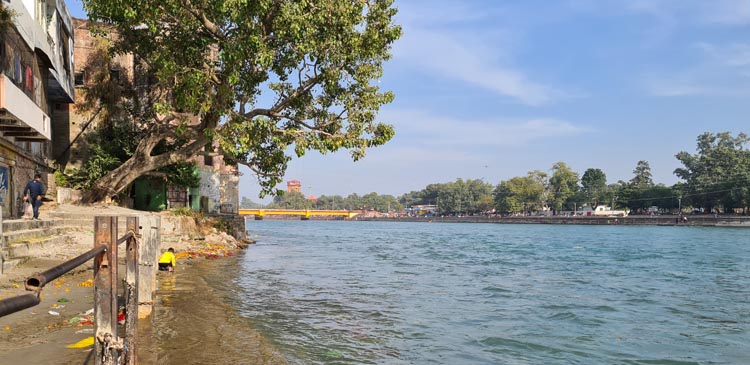To the south of Mount Kailash lies the Rakshastal Lake, just beside Lake Manasarovar. In Tibetan, Rakshastal is commonly known as La’nga Co, which roughly translates to mean “the dark lake of poison.” It carries salty, slightly bitter water. Though twins in their own ways, lake Manasarovar and Rakshas Tal are a bit of an oxymoron in themselves. While Lake Manasarovar has long been considered holy, Rakshastal is regarded as the “Demon Lake” or “Ghost Lake”. There are several religious mythologies and stories that justify its demonic name. However, the literal justification of the name Rakshastal Lake can be found in Sanskrit. The name Rakshas Tal translates to “Lake of the Demon” in Sanskrit – giving the name a literary justification. The lake’s deep blue water mirrors the unending universe as if the liquidated universe is flowing within the lake itself!
The Stunning Location of Rakshastal Lake
Spread across a total area of 250 square kilometers, Rakshastal Lake is tucked away in the faraway land of Burang County of Ngari Prefecture in Tibet. It is laid at an altitude of 15, 010 ft, surrounded by hills, and white cobbles, just to the west of Lake Manasarovar. Lake Manasarovar and Lake Rakshastal are connected by the Ganpa Chu channel. The Ghost Lake lies slightly at a lower elevation than Manasarovar Lake. Though there is a lack of grassland nearby, its location presents a mesmerizing view of the dark red island and deep blue lake water.
The Legends of Rakshastal Lake
Not only a stunning view but Rakshas Tal also offers a plethora of stories, wrapped with legends and mysteries. You will find different versions of the Lake Rakshastal story. Whichever lane you will take, you will meet with enchanting stories, all ready to captivate you. You will find both Hindu and Buddhist legends surrounding Rakshastal Lake.
- The most prominent and widespread legend ties the Rakshastal Lake to The Demon King, the Lankapaty Raavan. One version of the legend says that Ravan created Rakshastal, with the intention to check his newly acquired powers. He was an ardent Lord Shiva devotee. Thus, to impress his almighty, Raavan offered to sacrifice one of his ten heads. He continued standing on one leg, meditating, for 10 days, Finally, Shiva got impressed and granted Raavan superpowers. Some versions also say that Raavan decided to sacrifice a human head, but not his own.
- Another Rakshas Tal story claims that Lord Shiva created the lake himself to trap Raavan, on being angered by his bad deeds. The Lord covered the lake in burning sun to punish Raavan. While under entrapment, Raavan cried, thus making the lake water salty.
- Both Manasarovar and Rakshas Tal mirror Buddhism with their respective shapes. Buddhists believe that good and bad exist in harmony, just like light and darkness. Due to the crescent shape of the Rakshas Tal lake, Buddhism considers it as “darkness”, as opposed to the round shape of Lake Manasarovar, often regarded as “brightness.” While the philosophy makes the Ghost Lake even more enhancing, the saltwater lake coexists with its holy, freshwater twin, Lake Manasarovar under the sacred shadow of Mount Kailash, the holy abode of Lord Shiva.
Things to See Near Rakshastal
Upon arrival at Rakshastal Lake, visitors are greeted with a stunning landscape, and shining deep blue water extending to the skyline. With dark red hills rolling along the shore, the Rakshastal Lake reflects the blue cloudy sky above. The lake houses four islands – Dola, Topserma, Dosharba, and Lachato. However, apart from these, there are a few attractions to witness near Rakshastal Lake:
- Mount Kailash: Rakshastal Lake falls on the way up to Mount Kailash. People often visit the lake on their Kailash trip. Mount Kailash is the holy abode of Lord Shiva, and ardent devotees from around the world visit the holy mountain to pay their homage to the Lord. The mountain is considered holy in Hinduism, Buddhism, Jainism, and many other religions. The mountain stands at a height of 6, 638 meters above sea level.
- Lake Manasarovar: The twin of Rakshastal Lake, Lake Manasarovar is a holy lake and a popular pilgrimage site for followers of Hinduism, Jainism, Bonism, and Buddhism. Sitting at a height of 4, 590 meters above sea level, it is a part of the Kailash Yatra and devotees around the world visit the lake to take a dip in its water. Devotees believe that a dip in its holy water can wash off all their sins. It is a freshwater lake, fed by the Kailash Glacier. The lake’s name finds its origin in Sankrit words “Manas” and” Sarovar,” where “manas” mean “mind’ and ‘Sarovar” mean “a lake or a large pond deep enough for a lotus.”
How To Reach to Rakshas Tal lake?
Rakshastal is situated at about 1, 800 kilometers from Lhasa. To reach Rakhshastal Lake, you must take a plane or train to Lhasa, on arrival, hire a car from Lhasa to Rakshas Tal lake. You can also board a flight from Lhasa to Ngari Kunsha Airport. From here, take a taxi to reach Rakshastal, situated about 205 kilometers from this airport.
Another way to reach Ghost Lake is via the Nepal border. Cross Timure border which is 8 hours’ drive from Kathmandu to enter Tibet to visit Rakshastal. You will have to travel 660 km by road to reach the lake.
Rakhshastal Lake can also be reached from Lucknow, UP. The lake is clipped 470 km away from Lucknow. Cross the Nepal border at Rupaidhaia, and enter Nepalguni, a small town Tarai town situated at the India border. From here, take a 20 minutes flight to the hill town Simikot. Now from you can either hike or take a helicopter to Hilsa village called. Here, you will cross the border and reach Rakshas Tal located 60 kilometers from Hilsa.
You can also reach Rakshahtal by crossing the border via Lipulekh Pass in Uttarakhand. This trip is strictly allowed only for anyone who is part of the annual Kailash Manasarovar Tour by the Indian Government. You can’t cross this border as per your wish – you can visit the Rakhshastal Lake through the Nepal border which is open for all, but you need a Chinese Visa to enter Tibet.
Accommodation near Rakshastal?
Unfortunately, there are no accommodation options near Rakhshastal Lake – you have to accommodate yourself at the available bank of Manasarovar Lake. However, there are a few accommodations near Mansarovar Lake. Being adjacent to each other, you can hike a bit to reach Rakhshastal from Mansarovar Lake. Located at a distance of 40 kilometers from the Lake, Darchen is also an option as it offers all types of accommodations.
FAQs about Rakshastal Lake
Q1. When is the best time to visit Rakshastal?
A: The best time to visit Rakshastal Lake is during the peak time of Kailash Manasarovar Yatra, which is from April to September.
Q2. Can you bathe in Rakshastal?
A: Since Rakshastal Lake is highly saline, visitors do not bathe in its waters.
Q3. Why is there no greenery or animals near Rakshastal?
A: Rakshastal Lake is highly saline in nature. Its saline content prevents any grass to grow around it. Due to the same reason, animals avoid grazing around the lake.
